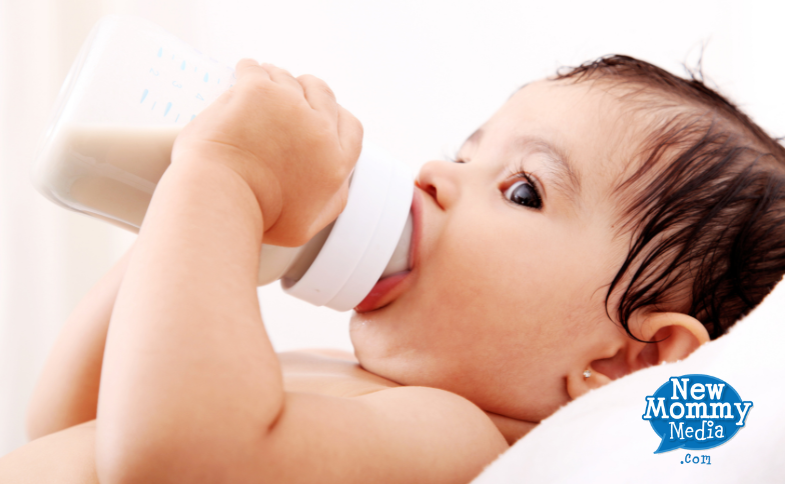Guide to Bottlefeeding: Best Techniques and Positions

Every baby will eventually have to take the bottle at some point. Some babies start earlier than others, for example, if you choose to formula feed right from birth. If you choose to exclusively breastfeed your little one, you may only introduce the bottle after several months. Either way, it is important to understand what the correct way to bottle feed your little one is.
In this guide, we will cover everything you need to know about bottle feeding. You’ll learn how to choose the right bottle and nipple, how to clean your baby’s bottles, the best bottle-feeding positions, and the best bottle-feeding techniques you can use.
Let’s dive right in, shall we?
Choosing the right bottle and nipple
First is choosing the right bottle and nipple. The right choice for your little one will be determined by her feeding needs. Generally, most bottles that are designed for newborns should work for all babies. However, if your little one is gassy or colicky, you can get her one with an infiltration system.
If your baby was exclusively breastfed for up to 6 months, chances are she may reject the bottle the first time you present it to her. When this happens, you may want to use a bottle and nipple design that is designed to look like a breast for an easier transition.
Additionally, you want to pay attention to the flow of the nipple. The younger your baby is, the slower you want her flow to be. As she grows, she will be able to handle faster flows.

How to clean your baby’s bottles
Next, you need to learn the right way to clean your baby’s bottles.
The best baby bottles have a simple design that is easy to take apart and put together. Cleaning the various parts individually reduces the risk of contamination. Get bottles that have wide necks and three basic parts: the nipple, the collar, and the bottle.
You can choose to either handwash your baby’s bottles or use a sterilizer.
Handwashing is pretty straightforward: take the bottle apart and clean the parts in hot, soapy water as soon as you are done feeding your baby. Do this with clean bottle brushes that are reserved for exclusively cleaning your little one’s bottles.
To use a sterilizer, let the bottle sit in hot soapy water for 5 minutes before rinsing them and placing them in the sterilizer following the manufacturer’s instructions. Once done, place all the parts on a drying rack and let them air dry, ready for the next feeding session.
The best bottle-feeding positions
There are several great bottle-feeding positions that you can use with your little one. Here are some of them:
- The arm cradle: For this position, hold your little one close to your chest. Rest her body in the crook of your arm. Slightly incline her head and chest towards you before administering the bottle.
- The upright hold: For this position, sit your baby in an upright position. Support her head with your chest or the crook of your arm. This is a great position if your little one has reflux. Just make sure that the bottle is always tilted up a little and the nipple is always filled with milk to prevent her from gulping air that may aggravate her reflux.
- Using a nursing pillow: Nursing pillows are great for positioning your baby comfortably while also supporting you throughout your feeding session. This way, neither of you will get tired.

The best bottle-feeding techniques
Next, we are going to look at some of the bottle-feeding techniques that you can use to ensure that you always get the most efficiency out of your baby’s feeding sessions. Here are some of the techniques you can use together with the positions outlined above:
- Switching sides: Switching sides every 10 or so minutes is a great way to ensure that your baby does not develop positional preferences as she feeds. When a baby favors one side over the other, feeding her differently becomes harder, for example when a caregiver tries to do it. Switching sides will also give your arms a break while helping to pace the meal. Your baby will also get to decide whether or not she wants to continue.
- Pace feeding technique: This is a bottle-feeding technique that will help you regulate your little one’s feeding. Pace feeding is all about following the baby’s cues and taking breaks as needed. The frequent breaks will teach your baby to regulate her hunger while also giving her some time to digest what she has already consumed. Ensure you position your bottle horizontally instead of vertically to encourage her to pull the milk instead of having it drip in her mouth.
- Pumping: While this is not technically a bottle-feeding technique, it is an essential skill that every mom who plans to bottle-feed should learn. It will help make the transition to the bottle easier if you keep giving her breast milk through the bottle. Plus, you can even start delegating feeding duties to others earlier, allowing you to take a break every once in a while!
Final thoughts
Bottle feeding is an essential skill that every parent should learn. It is also an inevitable right of passage that every baby goes through, which is why it is so important to have a good understanding of how to do it right. Hopefully, the tips outlined here will help make that transition super easy. Good luck!